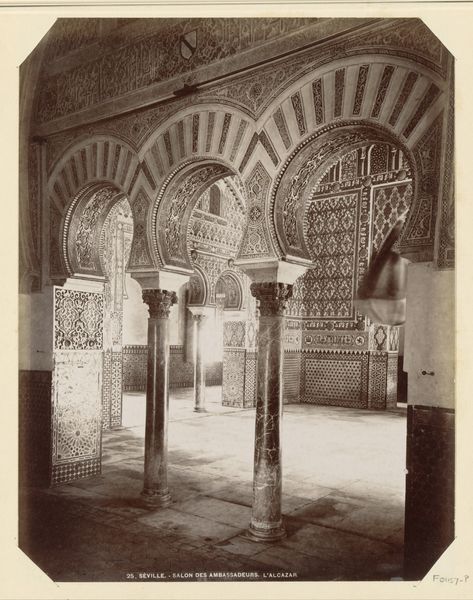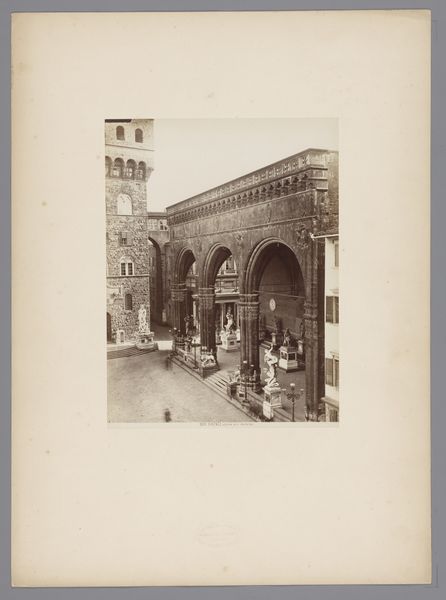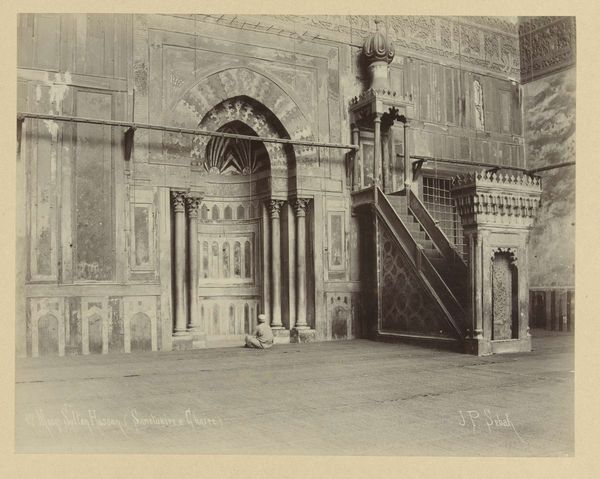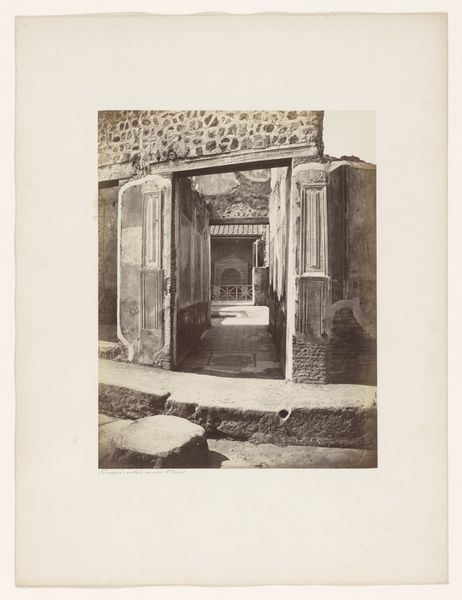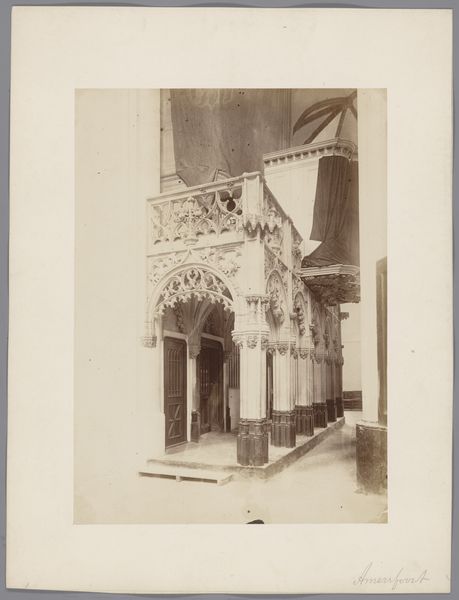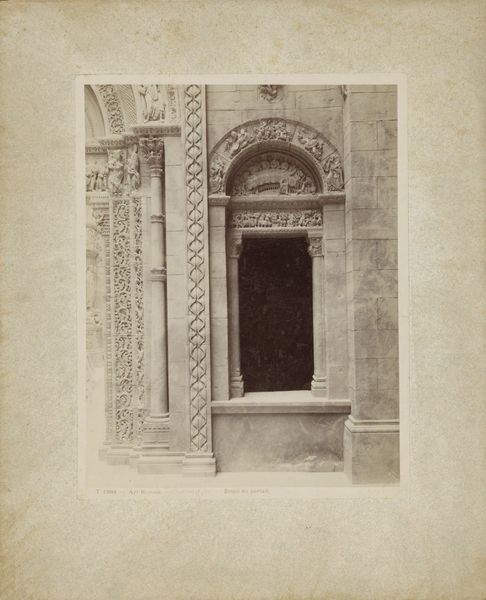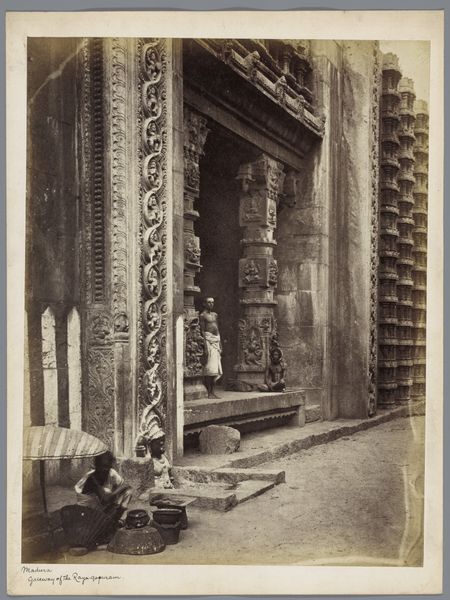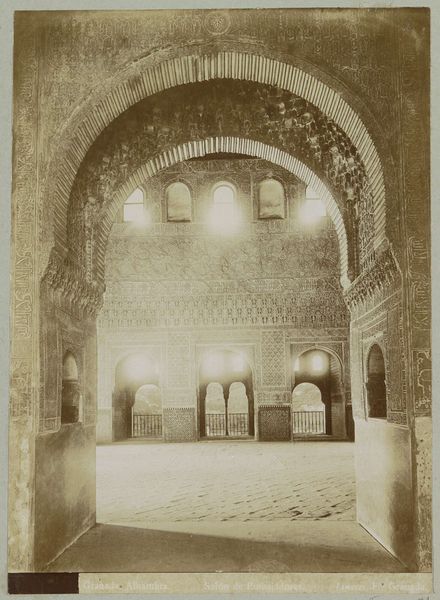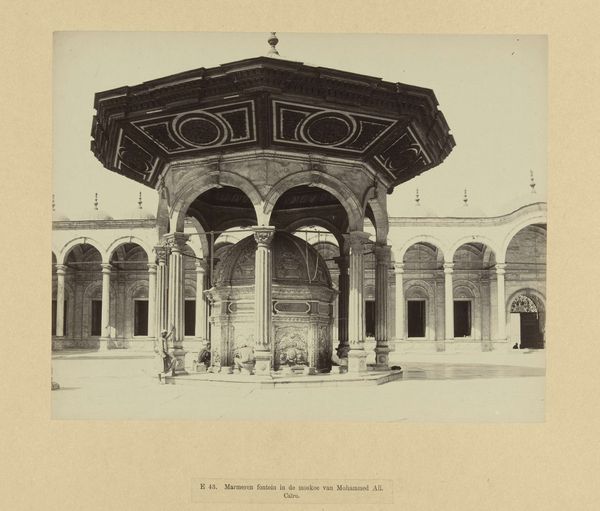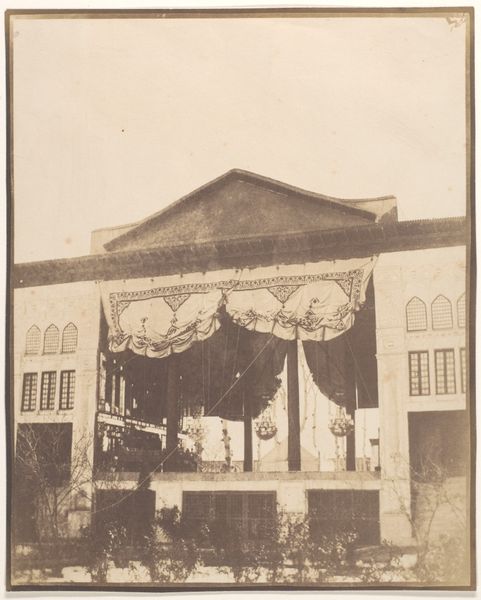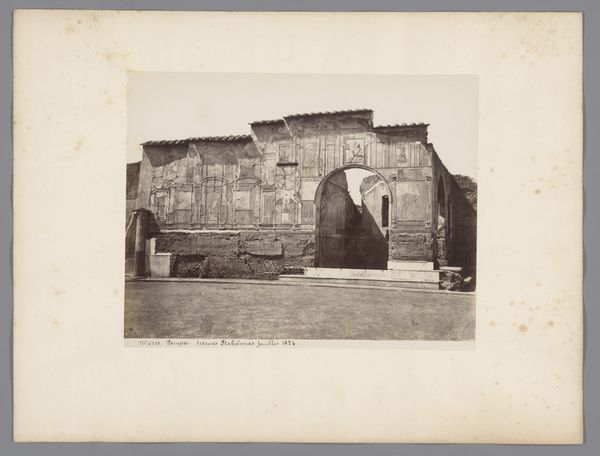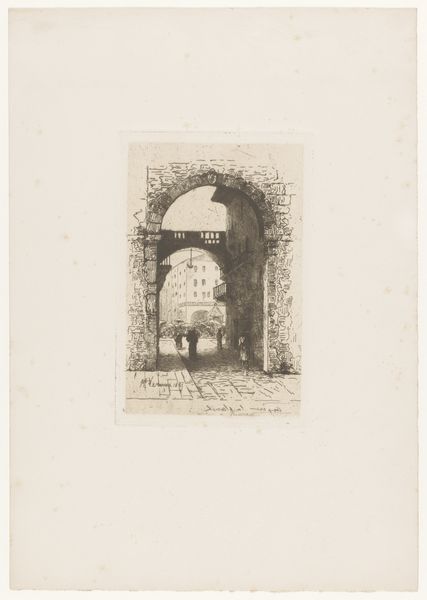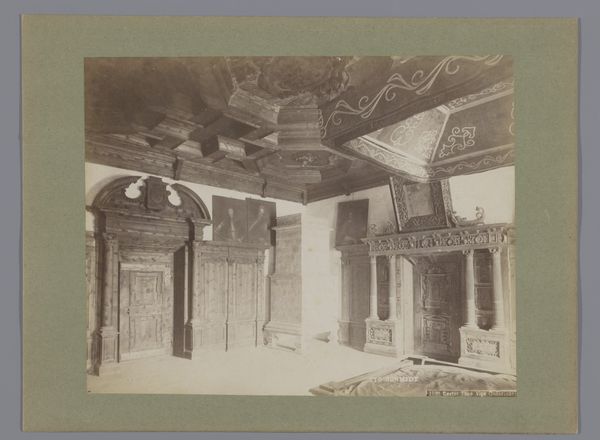
photography, gelatin-silver-print
#
landscape
#
photography
#
gelatin-silver-print
#
19th century
#
islamic-art
Dimensions: height 267 mm, width 209 mm, height 556 mm, width 469 mm
Copyright: Rijks Museum: Open Domain
Editor: This photograph by Jean Pascal Sébah, taken sometime between 1888 and 1895, is a gelatin silver print titled "Minbar in de moskee van Amir al-Maridani, Caïro". I'm struck by the textures and patterns; the intricate woodwork of the minbar contrasts with the weathered walls. What do you see in this piece, particularly regarding its cultural context? Curator: I see a powerful commentary on the intersection of faith, power, and representation. This photograph, taken during a period of intense colonial interest in the Middle East, serves as a visual document but also potentially reinforces orientalist perspectives. How do you think the photographer's gaze, as a non-Egyptian, might influence our interpretation of this sacred space? Editor: That’s interesting, I hadn’t considered that aspect. I was focused on the structure itself as a piece of Islamic art. Curator: Indeed, the minbar itself speaks volumes. It's a site of religious authority, yet here it is, presented as a relic, an object of study for the Western gaze. Consider the implications: is the photograph a celebration of Islamic artistry, or does it subtly participate in a power dynamic, capturing and possessing a culture through image? And what about the absence of people? What does that tell us? Editor: I think it might do both. Showing the minbar this way could make people admire the detail but might separate it from its original function. Considering this now has opened a completely different perspective than just its artistry or documentation. Curator: Precisely! Recognizing those conflicting layers, the tensions inherent in the act of representation itself, allows us to engage with the photograph on a much deeper level. Thinking about whose voice is being amplified here—and at whose expense. Editor: Thank you; I see now how looking at photography from an intersectional perspective sheds a new light on it. It encourages us to challenge our assumptions about both the subject and its depiction.
Comments
No comments
Be the first to comment and join the conversation on the ultimate creative platform.
